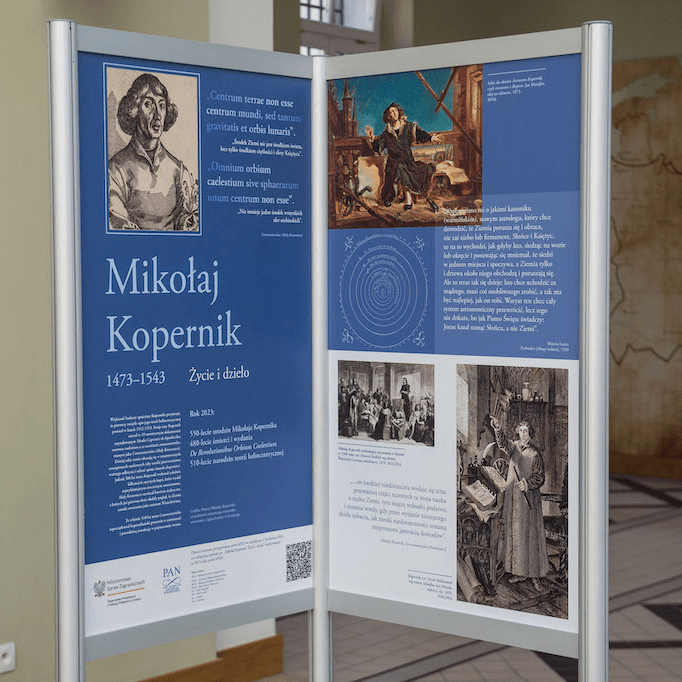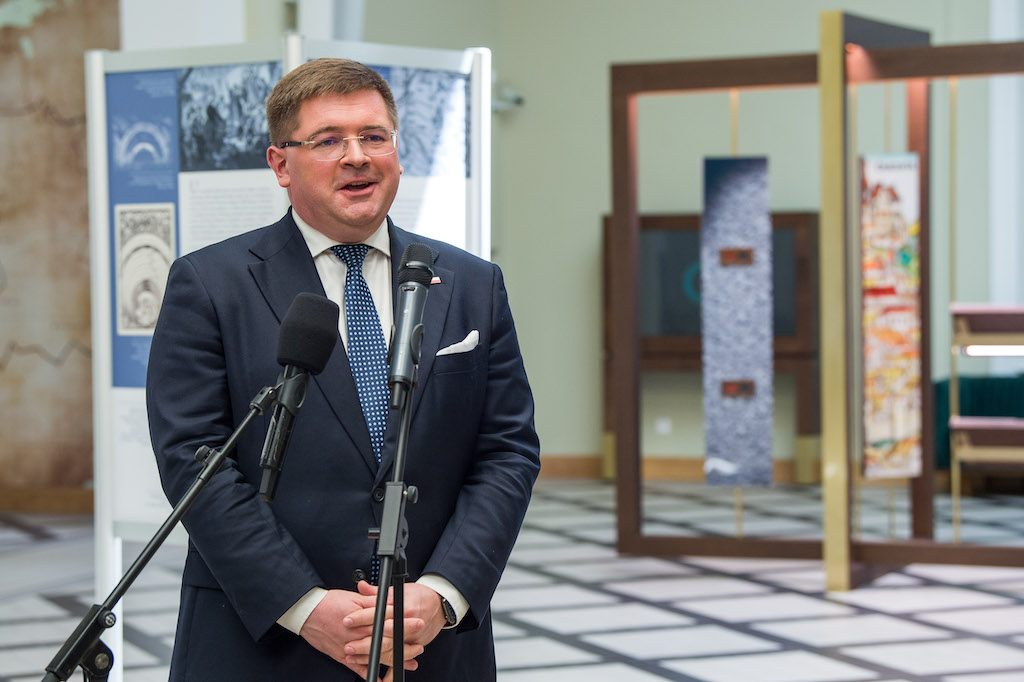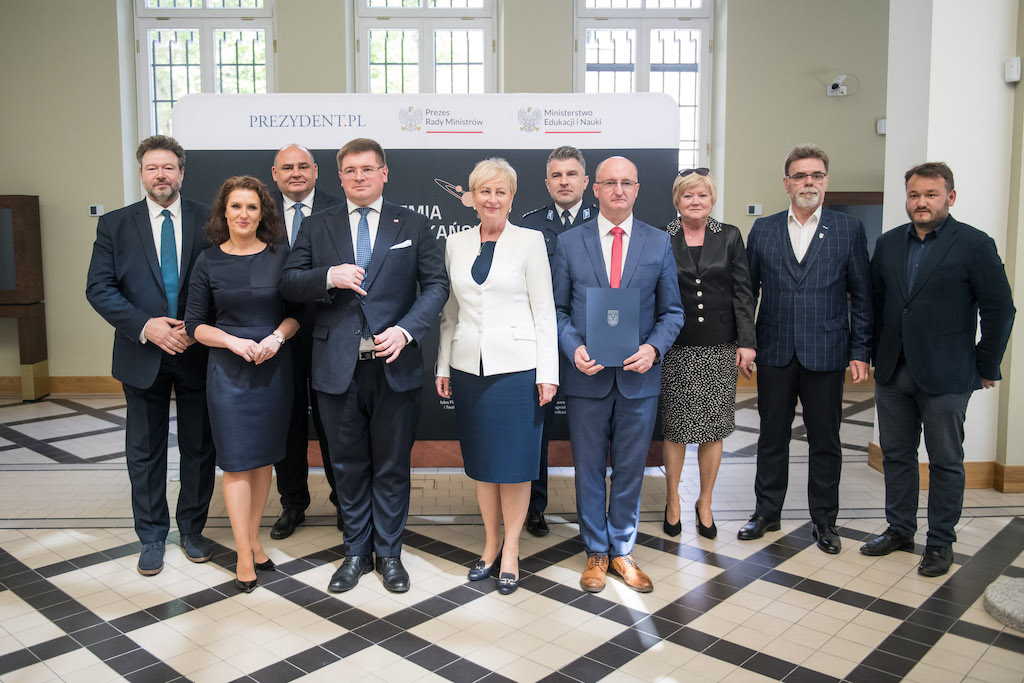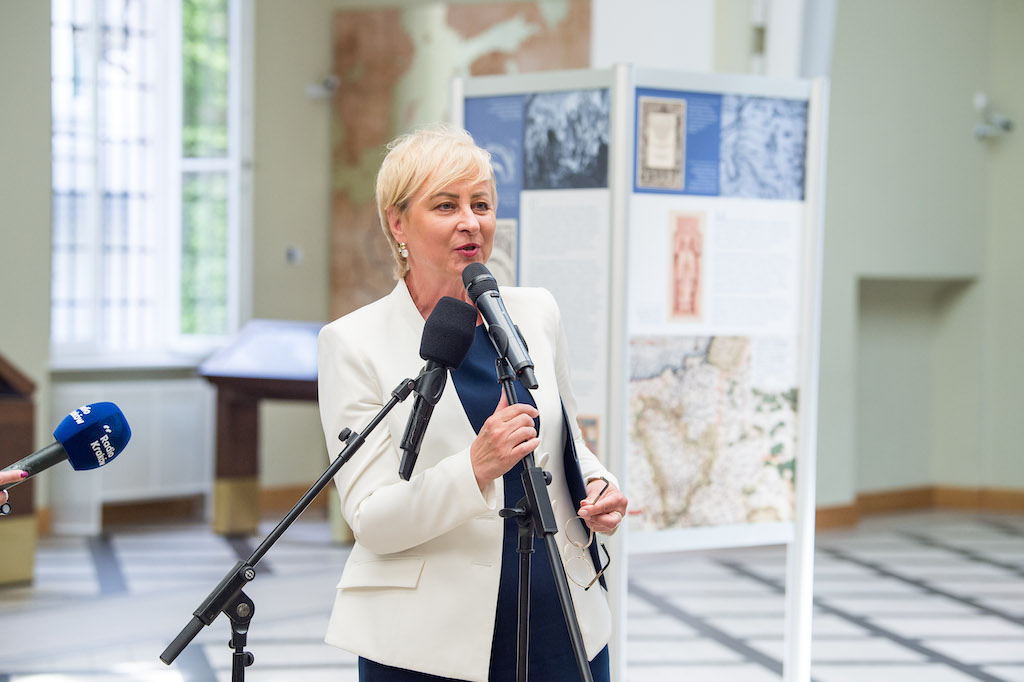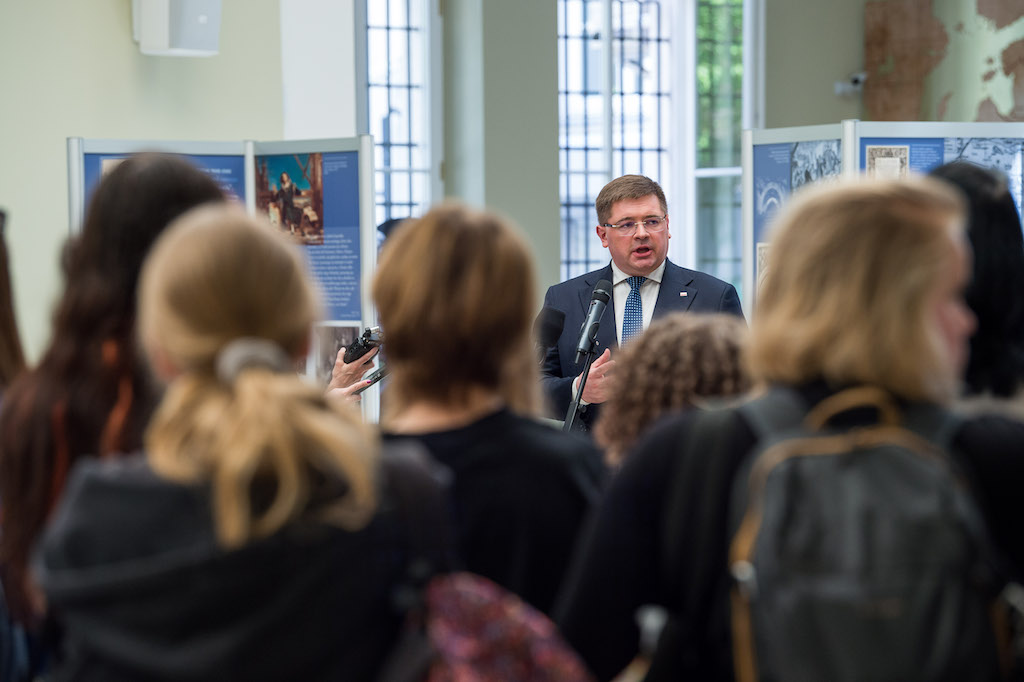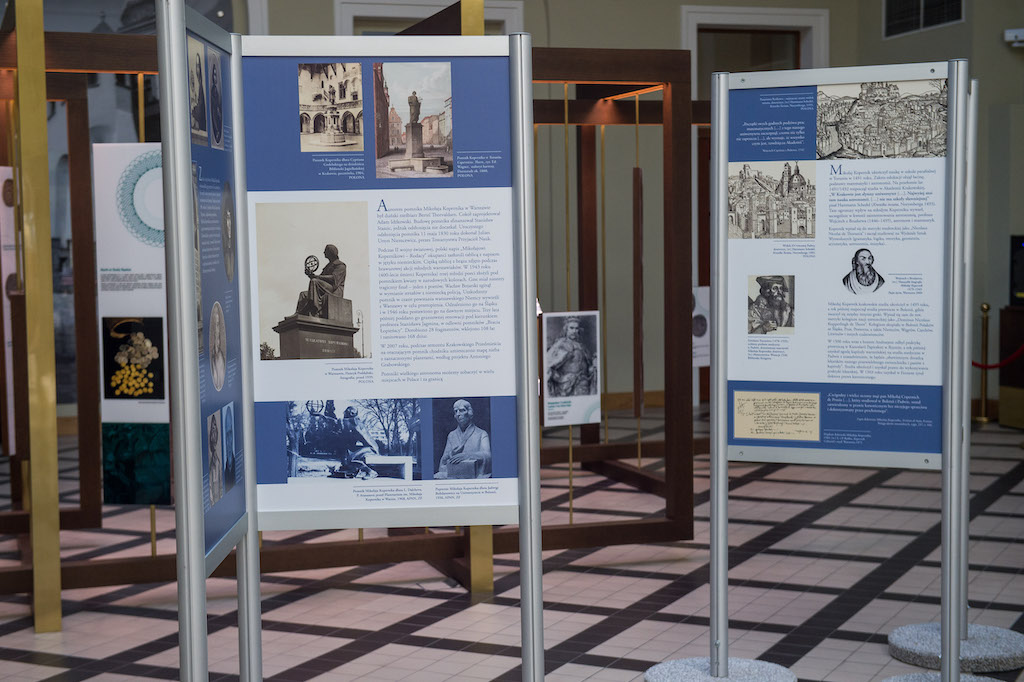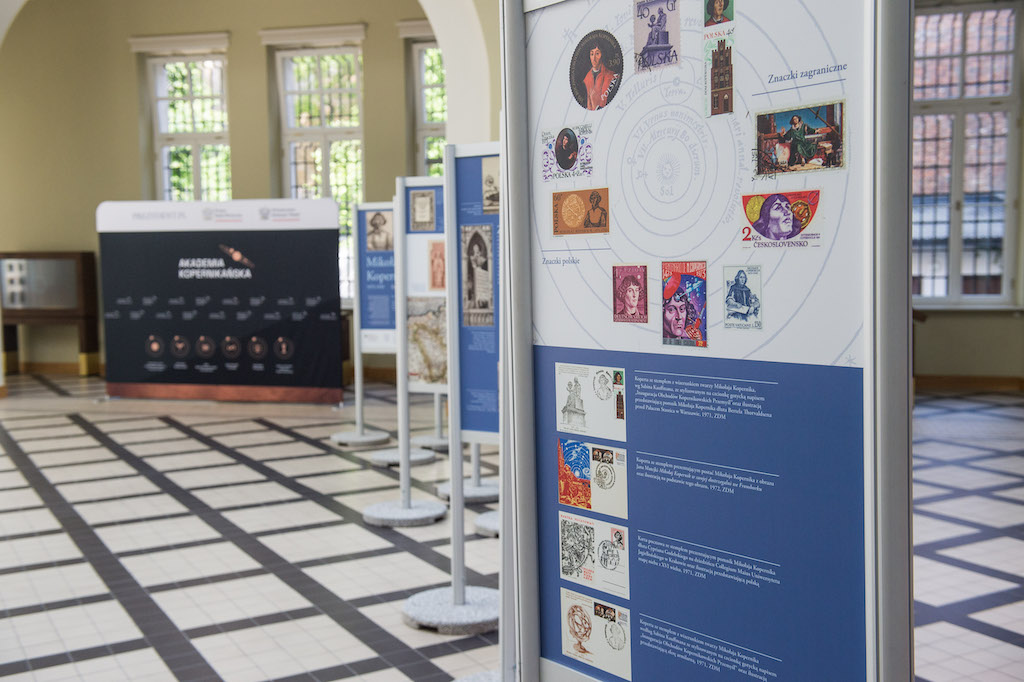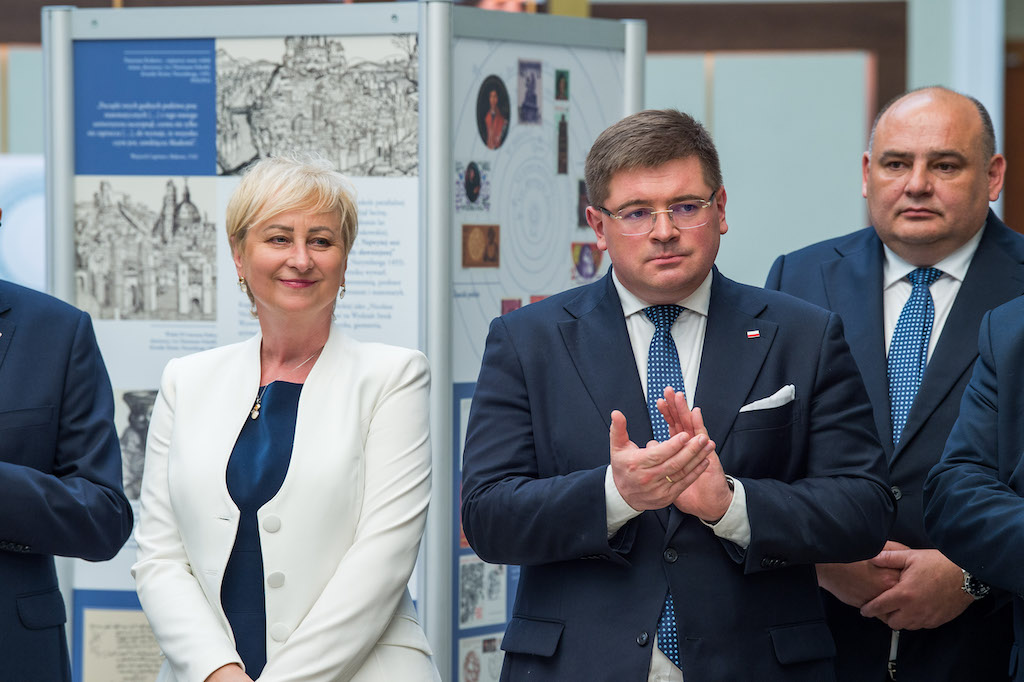On 23 May 2023, the opening ceremony of the exhibition ‘Nicolaus Copernicus – life and work’ prepared by the Ministry of Foreign Affairs took place at the headquarters of the district branch of the National Bank of Poland in Krakow. In the following months, the exhibition will visit other cities in the country and abroad.
The event was attended by Deputy Minister of Education and Science Tomasz Rzymkowski, Deputy Minister of Foreign Affairs Piotr Wawrzyk, Governor of Małopolska Łukasz Kmita, Director of the Copernicus Academy Office Professor Witold Mazurek and representatives of the Copernicus Academy, including members of the Academy’s chambers at home and abroad.
Four anniversaries
In his speech, the Deputy Minister of Education and Science focused on Copernicus’ contribution to the development of science. Tomasz Rzymkowski emphasised that his work made him a symbol of scientific discovery and progress. – The creator of the heliocentric model of the Solar System not only revolutionised astronomy, but also lived and worked at a particular historical moment, and his discoveries were and still are an inspiration, which is clearly visible in the exhibition, he emphasised.
The authors of the exhibition pointed out that this year marks the 550th anniversary of the birth of the eminent Polish scientist, the 510th anniversary of the birth of the heliocentric theory and the 480th anniversary of his death and the publication of De revolutionibus orbium coelestium. A work that initiated an upheaval in astronomy and a true revolution in the understanding of the world.
Throughout the exhibition are boards with reproductions of a number of unique artefacts that highlighted various aspects of Copernicus’ life and legacy. These include stamps and medals with Copernicus’ image, portraits of artists from different eras, quotations from manuscripts and documents related to his work, photographs of monuments commemorating the scientist, and numerous materials illustrating the reception of his discoveries by his contemporaries.
Scholar and canon
Rzymkowski also stressed that one of the aims of the exhibition is to show Copernicus as a man who not only conducted scientific research, but also served as a Warmian canon. He added that the exhibits in the exhibition provide an opportunity to better understand both the great astronomer’s scientific discoveries and the context in which they were made.
During the speech, we also heard that the figure of Nicolaus Copernicus is a great example of a passionate patriot and, at the same time, one of the first true humanists in the history of the world, whose horizons and interests were as broad as those of Leonardo da Vinci, an artist and scholar two decades older.
Deputy Minister of Foreign Affairs Piotr Wawrzyk, meanwhile, pointed out the importance of Nicolaus Copernicus’ achievements for science and culture not only in Poland. – Our mission, as the Ministry of Foreign Affairs, is to promote the scientific and cultural achievements of our country around the world. This exhibition is an excellent tool to show what a great impact Copernicus had on the development of science,’ Wawrzyk said.
As highlighted, the Ministry of Foreign Affairs hopes that through this project, Poland’s image as a country with a long and rich history of science will be strengthened on the international stage.
Real capital
Professor Mirosław Lenart, Dean of the College of Philosophy and Theology of the Nicolaus Copernicus University in Kraków, referred at the ceremony to its educational function, emphasising the importance of the knowledge imparted. – Money may provide us with comforts and conveniences, but it is knowledge that is the power to acquire and effectively manage these resources, to achieve success. It is she who is the real capital. The real capital is the students,” he noted.
Continuing, he also stressed the important role that education plays in preserving and promoting Copernicus’ legacy. The exhibition is not only a tribute to the great scientist, but also a valuable educational tool to help consolidate knowledge of his achievements.
Following its showing in Krakow, the exhibition will be presented in other cities in Poland and abroad, providing an excellent opportunity to share knowledge of Copernicus’ heritage with the international community. After its showing in Warsaw, Kielce and now Kraków, the exhibition will be taken, among others, to the First World Congress of Polish Education and Science Abroad in Jachranka, and then to the Gietrzwałd Municipal Council.
